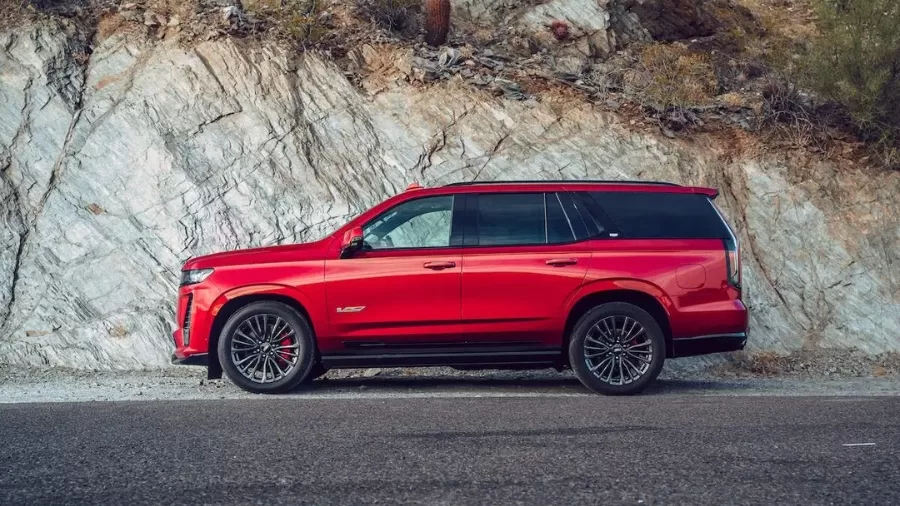Auto
Why Are American Cars Struggling to Win Over European Roads?

- American car manufacturers suffer in Europe due to vehicle dimensions, petrol mileage, and regulatory accords.
- On the other hand, the import value of American cars into Europe increased by 51.4% in 2023, despite decreased interest from European consumers.
Some of the most well-known automotive brands have sold millions of vehicles around the world. General Motors, Ford, and Cadillac are American car manufacturers that have given the American automotive industry a historically significant presence. In a different context, their success worldwide has been far outstripped by that of VW, BMW, and Mercedes. A broad sweep of factors has conspired to work against the sale of their cars.
Size and Practicality: A Poor Fit for European Roads
In Europe, the biggest problem for American cars is size. Unfortunately, automobiles like SUVs as well as pickup trucks, which dominate the U.S. market, are significantly impractical in the cities in Europe, which have very narrow streets and confined parking suspensions. Cars that are small, light, and agile have come to the fore in Europe—enhancing their preference for European and Asian brands that offer better models for ultra-urban facilities.
Car Efficiency and Environmental Regs
Americans prioritise automobiles driven by Europeans, including fuel efficiency due to high fuel prices and the strictest emissions regulations. Most of America’s car models, especially the old ones, are more likely to sport bigger engines consuming more fuel, compared to cars from, say, Europe, all of which in turn makes cars less competitive in a market in which fuel efficiency is held in high regard. Also, European Union (EU) regulations concerning car emissions and safety rank as some of the strictest in the world. Cars from the US generally require some kind of modification in horse sales just to meet these regulations, adding to the costs and time before they may legally be sold.
High Import Costs and Trade Barriers
The transportation of cars from the US to Europe is a bit of an expensive affair. The European Union normally configures higher tariffs, VAT taxes, and other levies on non-EU cars, resulting in a higher price for their US counterparts as against the EU counterparts. The UK’s post-Brexit tariff adjustments have only exacerbated the difficulties of imports, influencing price and availability. Furthermore, the EU levies a 10% duty on vehicles imported from the United States, while the United States imposes only a 2.5% duty on cars from the EU. This trade imbalance has long existed, with American automakers incurring greater costs when selling to the EU.
Consumer Preference and Brand Loyalty
European consumers are known to have distinctive tastes for brands when it comes to automobiles (automobiles). The German automobile companies, including Audi, BMW, and Mercedes-Benz (especially), offer the best in precision engineering and materials, making them the few to warrant brand loyalty where luxury cars are concerned. The Japanese and South Koreans get thrown in with their small-conservative-engine, hypertrust-worthy cars. American cars with power and size already have some automobile followers; however, in a world in which refinement, handling, and space for practicality value, these cars have no chance against the top players. Known for their size and power, the Ford Mustang and some other sports cars were never the losers, borrowing the competitors’ way toward brand loyalty. The currents of the mainstream-assorted people’s sedans and SUVs, however, will do nothing to ensnare academia from European politics ever since these have been some decades-old brands that have made trust with the consumer.
Diesel vs. Hybrid: The Era of Electric Vehicles
Diesel cars used to be predominant in Europe because of reasons like efficiency and durability. However, the published manufacturers in the U.S. still prefer primarily the use of gasoline-burning vehicles with a few diesel engines. Though the love affair with diesel made many consumers less keen on them lately, they quickly had to change European brands to hybrid electric. Meanwhile, American carmakers, save for Tesla, have failed to join the bandwagon of electric vehicles. The VW, the Volvo, and the Renault from Europe lead the bandwagon as regards electric vehicles, having aligned their technology with incentives and rising customer preference for greener machines. As they try to reach total electric vehicle adoption, Europe works diligently; their domestic brands are leading the way.
Right-Hand Drive: A Challenge in The UK and Beyond
LHD happens to be a practical issue; that is, most American cars are left-hand drive (LHD). Naturally, then, the UK, Ireland, Malta, and Cyprus happen to drive on the left side of the road, needing right-hand drive (RHD) vehicles. The argument for the limited crossover appeal of such American brands is that many U.S. independents do not bother to produce RHD models.
Little Information on If Sales Support and Servicing Costs Are a Problem
Owning an American car in Europe can be very inconvenient due to the lack of service centres and parts accessibility. European car manufacturers cover nearly every city with their dealerships, which makes the customer more likely to go for maintenance and repair measures promptly. Meanwhile, those that have American cars either have to wait for spare parts in some cases to make their waiting period painful or pay a lot more for their service, sending potential customers—which goes to liken the style of cars to that of cigarettes.
Recent Sales Trends of American Cars in Europe
Several economic and political concerns have impacted automobile sales in Europe for the United States over the last decade. In 2023, the EU imported passenger motor cars from the United States for a trade value of around $7.8 million, a startling 51.4% increase over the previous year. This higher surge in import value indicates that American cars are becoming more appealing to buyers in Europe. However, one must point out that these figures do not represent the number of units sold but the total import value. This rise may be attributed to an entry of higher-priced models or fluctuations in currency exchange rates… The necessity for manufacturers to begin listening to this orchestra of the winds has thrown all of these phenomena in their path. On an ecological scale, a probe reveals dealing with the challenges of stringent regulations that prompt emissions, their localisation in business in strength against the local brands, variation of vehicle license plates, and simplicity of size on preference statements. These move together with the American market’s principle: advocacy of change for well-functioning operations in profits by transnationalists. -If American manufacturers could tap into this momentum, they would have to continually cooperate with the European authorities and comply with euro standards.
In conclusion, while the amount of American car imports into Europe has begun to increase, long-term success is dependent on manufacturers’ capacity to continuously adapt to the actual tastes and wants of the European automotive/vintage business. By stressing fuel efficiency, adhering to EU regulatory requirements, and making right-hand drive conversions, American automakers may maximise their customer appeal in European markets and potentially increase their current market share.

















































